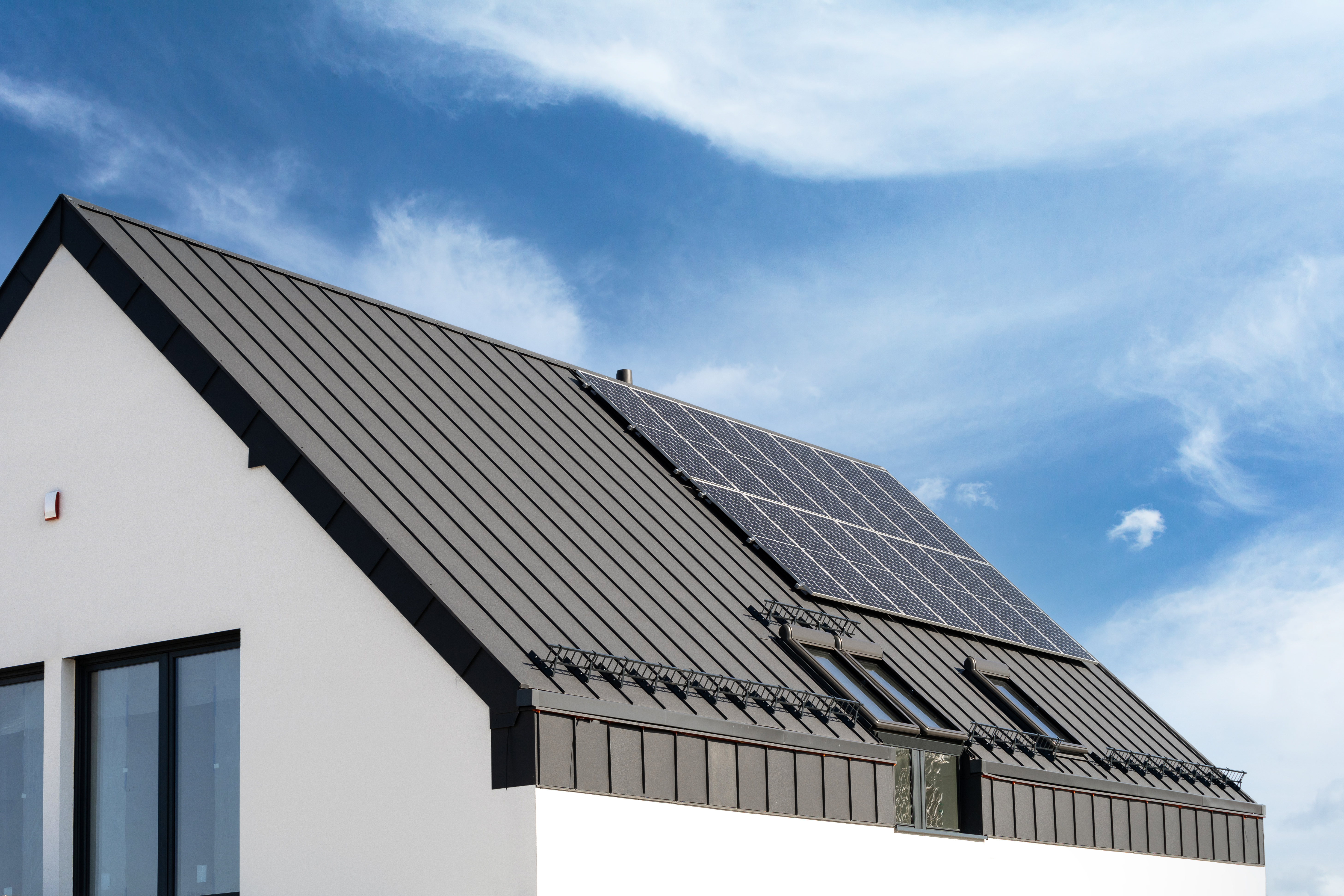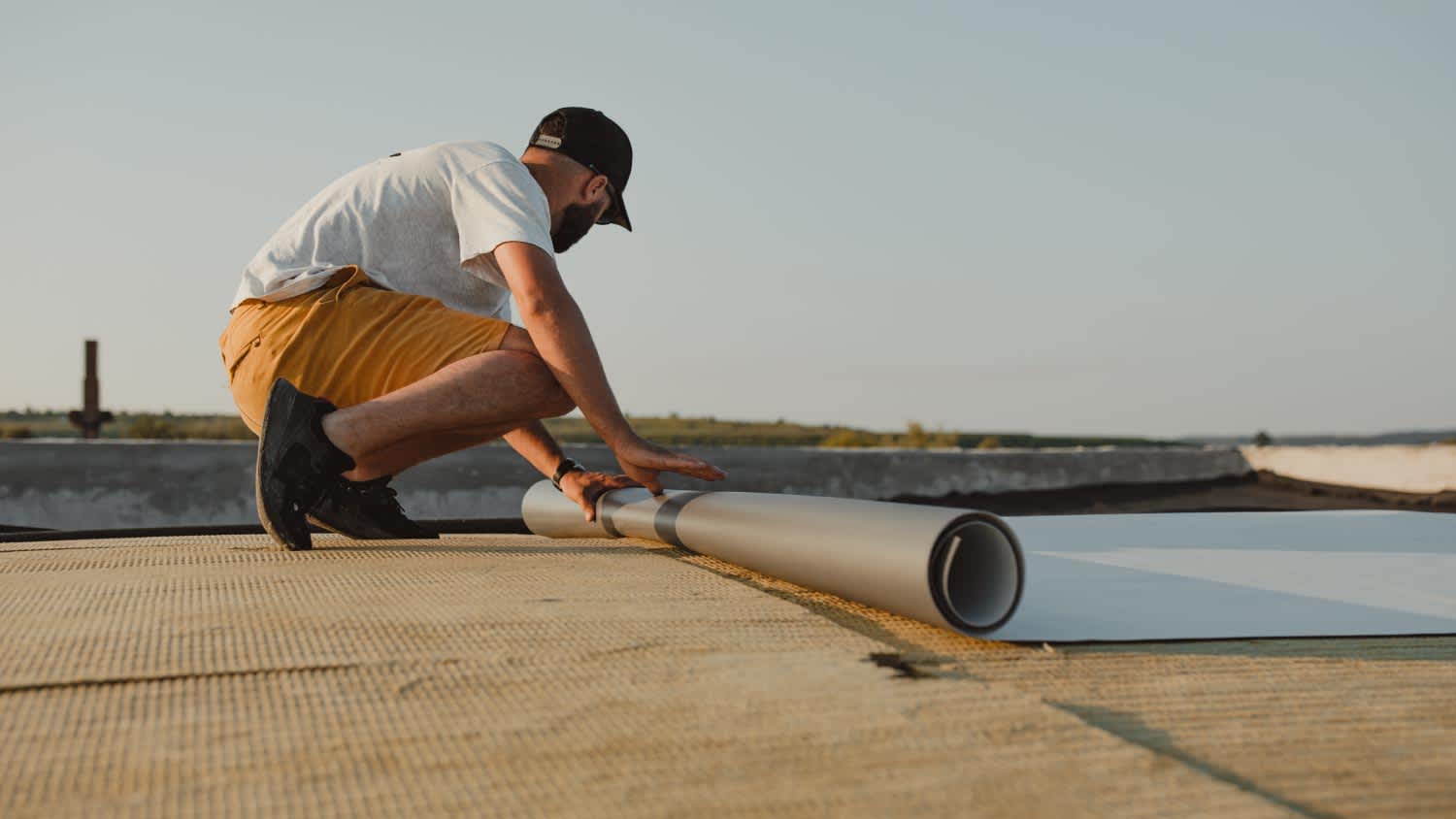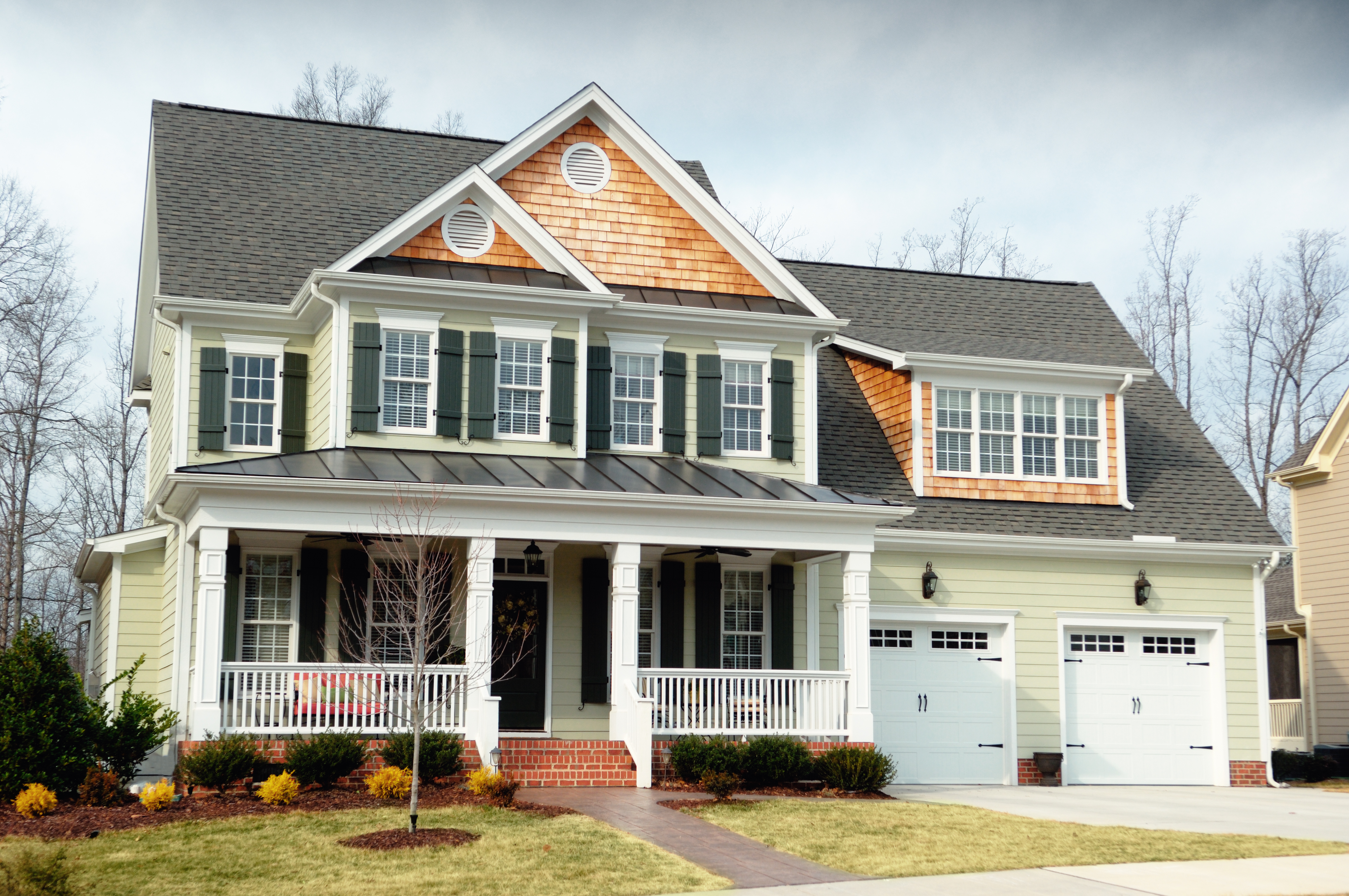
A metal roof can defend your home against Ohio’s varying weather conditions. Learn how much a metal roof costs in Columbus, OH.
The cost of TPO roofing averages $10,700 for 1,500 square feet, but ranges between $6,500 and $24,000, depending on several factors.


Roof size is the single most important factor to consider when estimating your total, but roof penetrations like chimneys and vents can also increase job complexity and cost.
Consider paying more to add insulation under your TPO roofing. Doing so can save you money in the long run on heating and cooling bills.
Opting for a fully-adhered TPO roof can cost 15% to 20% more but helps avoid potentially more expensive roof leaks in the long run.
TPO roofing is relatively easy and affordable to repair. Ask your roofer if a repair is possible before spending the money on a full roof replacement.
On a 1,500-square-foot roof, thermoplastic polyolefin (TPO) roofing costs anywhere between $6,500 and $24,000, with a national average of $10,700 to install. This comes out to between $4.50 and $16 per square foot or $450 to $1,600 per roofing square of TPO.
TPO roofing is an up-and-coming rubber roofing material that does an excellent job of reflecting heat instead of absorbing it. TPO consists of a single-ply white membrane, and it works best on a flat roof. But if your home has any low-sloping dormers, TPO will do a great job staving off the summer heat in those bedrooms.
In 2020, the United States Census Bureau found that the average new home was 2,200 square feet, but your home may be much smaller or much larger, so factor in the total square feet of your home while calculating total costs rather than look at the average cost, as general estimates will likely be inaccurate. Smaller roofs cost slightly more per square foot than larger ones.
| Roof Size (Square Feet) | Cost Range (Installed Price) |
|---|---|
| 200 | $2,000–$3,500 |
| 500 | $2,500–$8,500 |
| 1,200 | $5,500–$20,400 |
| 1,500 | $6,750–$24,000 |
| 2,000 | $9,000–$34,000 |
| 3,000 | $14,000–$40,000+ |
Labor for installing TPO roofing material costs anywhere between $3 to $7 per square foot on average. If the installer needs to remove and dispose of the old roofing or add insulation, you’ll pay closer to the $7 mark, but if your old roof is in good enough condition, expect to pay closer to the lower end of the price range.
Some roofing contractors may charge by the hour rather than the square foot. Roofing labor can cost anywhere between $75 and $120 per hour, and since TPO installation requires specialized training and experience, expect your project to fall on the higher end of that range.
Homeowners in higher cost of living areas may spend more on TPO roofing than in other areas. While costs may be high in cities, you may also pay a premium in remote areas where materials have to be transported long distances or where there may not be many roofing pros who offer TPO installation.
There are a number of factors that determine how much you’ll pay for TPO roofing beyond the size of your roof. The specific brand, insulation type, attachment type, customizations, and more can all add to your project cost.
TPO is a newer rubber roofing material comprising a mixture of synthetic rubber and fillers such as talc and fiberglass—in short, each brand is different, so prices per square foot can vary drastically depending on the manufacturer. To provide some context, a rubber roof installation typically costs between $6,000 and $18,000.
TPO membranes are manufactured and sold in various widths and thicknesses, each with its own price point. Common TPO roll widths are 4, 6, 10, and 12 feet and with thicknesses of 45, 60, and 90 mils. The longer and thicker the roll size, the more they’ll cost.
Insulation takes up a large portion of the installation, accounting for about 25% of the total cost. There are four types of insulation material for TPO roofs, and each one comes with its own average costs:
| Insulation Type | Average Cost (Per Square Foot) |
|---|---|
| Polyisocyanurate (PolyISO) | $1.60 to $2.40 |
| Fiberboard | $2.50 to $15 |
| Expanded polystyrene (EPS) | $3 to $4.20 |
| Extruded polystyrene (XPS) | $1.60 to $2 |
PolyISO is the most popular choice for insulating a flat-top roof. Prices vary based on thickness (either 1 or 4 inches thick, generally speaking) and the R-value—the material’s ability to resist heat flow.
Not unlike other low-slope roof types, such as torch-down roofs, TPO roof flashing is a specialty product consisting of metal pieces with a TPO exterior or form-specific TPO material. The flashing creates a seal by bonding with the roofing material during installation.
Your TPO roof will require flashing at roof junctions, where walls intersect the roof plane—or there's a penetration in the roof for things like plumbing, air vents, or chimneys. Flashing costs are over and above the cost of the rest of the roof and range from a few dollars each to $50 per item.
The attachment method you choose also plays a role in your TPO roofing cost. There are three attachment methods to consider, including ballasted, fastened, and fully-adhered attachments:
| Installation Method | Average Price (Per Square Foot) |
|---|---|
| Ballasted attachment method | $1.50 to $2.50 |
| Fastened attachment method | $2 to $3 |
| Fully-adhered attachment method | $2.75 to $3.50 |
The prices of these options can vary based on the thickness of the membrane, with most membranes measuring at 45 mils or 65 mils. For reference, one mil is 0.001 inches. Membranes that are 65 mils will fall at the higher end of the price range, while 45-mil membranes will fall on the lower end.
Your installation might require customizations—or you might simply want a nice feature like skylights—that can increase the cost of the TPO roofing. Such customizations include roof penetrations for roof vents, electrical conduits, piping, chimneys, and skylights, which can add $5 to $50 each, depending on the complexity of the project.
You’ll spend an extra $3 to $7 per square foot when you hire a local roofing pro, but this isn’t a job you can DIY. Installing your own roof poses a safety risk, and improper work can lead to leaks and result in costly damage.
There are a few reasons you should forgo this DIY and hire a roofer to install a TPO roof:
Roof repairs come with a risk of falls and injury, but pros have the tools to do it safely.
TPO roofing requires the right roof slope, which a pro can assess.
Improper roof installation can lead to leaks and damage your home.
DIYing your roof may void your homeowner’s insurance.
Pros have insurance and may offer warranties that can help protect your investment.
TPO roof repair can cost anywhere between $600 and $3,000, depending on the extent of the damage, the repair area, and the complexity of the repair. TPO repair is a fairly straightforward process, and a roofing repair pro with experience working with this material can fix damage quickly. In cases of widespread damage or for a TPO roof that’s more than 20 years old, a full replacement may be more cost-effective in the long run.
While it may be tempting to save on a TPO roof by attempting to install it yourself or use a budget material, there are better ways to cut costs that won’t potentially lead to bigger problems.
Schedule your roof installation during an off-season. Some roofing contractors offer discounts during slow times like late fall or early spring.
Get a quote from at least three experienced contractors to find the best deal.
Choose the least expensive recommended insulation type.
A new roof will help when it comes time to sell your home due to the energy savings, low likelihood of upcoming repairs, and extended time before expected replacement. While TPO roofing isn’t a particularly stylish aesthetic choice, a new, well-installed, durable roof will always be a plus if you’re putting your home on the market.
While you don’t need an exact measurement, having an understanding of your roof size and slope before you call is helpful.
Be sure to review the pros and cons of TPO roofing in your specific climate.
Ask your roofer about the materials, such as flashing and insulation, and how they can improve energy efficiency.
Research your pro's credentials and ensure they have experience with installing TPO roofing.
Home is the most important place on earth, which is why Angi has helped more than 150 million homeowners transform their houses into homes they adore. To help homeowners with their next project, Angi provides readers with the most accurate cost data and upholds strict editorial standards. We extensively research project costs to develop the pricing data you see, so you can make the best decisions for you and your home. We rely on reputable sources, including the U.S. Bureau of Labor Statistics, academic journals, market studies, and interviews with industry experts—all to ensure our prices reflect real-world projects.
Want to help us improve our cost data? Send us a recent project quote to [email protected]. Quotes and personal information will not be shared publicly.
From average costs to expert advice, get all the answers you need to get your job done.

A metal roof can defend your home against Ohio’s varying weather conditions. Learn how much a metal roof costs in Columbus, OH.

Learn about roof replacement costs in Columbus and what factors are at play to budget accurately and make sure you’re getting a fair price.

Dealing with a visibly damaged roof or leak? Learn about roof repair costs in Columbus to see how much you’ll need to budget for a permanent solution.

An attic without proper ventilation can cause a number of roofing problems, inside and out. Here’s how you can tell if a poorly ventilated attic is wrecking your roof.

Roof sealant helps protect your roof from the elements. Learn about different types of roof sealant and how to pick the right one for your roof.

Painting a metal roof helps it look great and last for decades. Use this guide to learn how to paint a metal roof, whether you DIY the job or hire a pro.